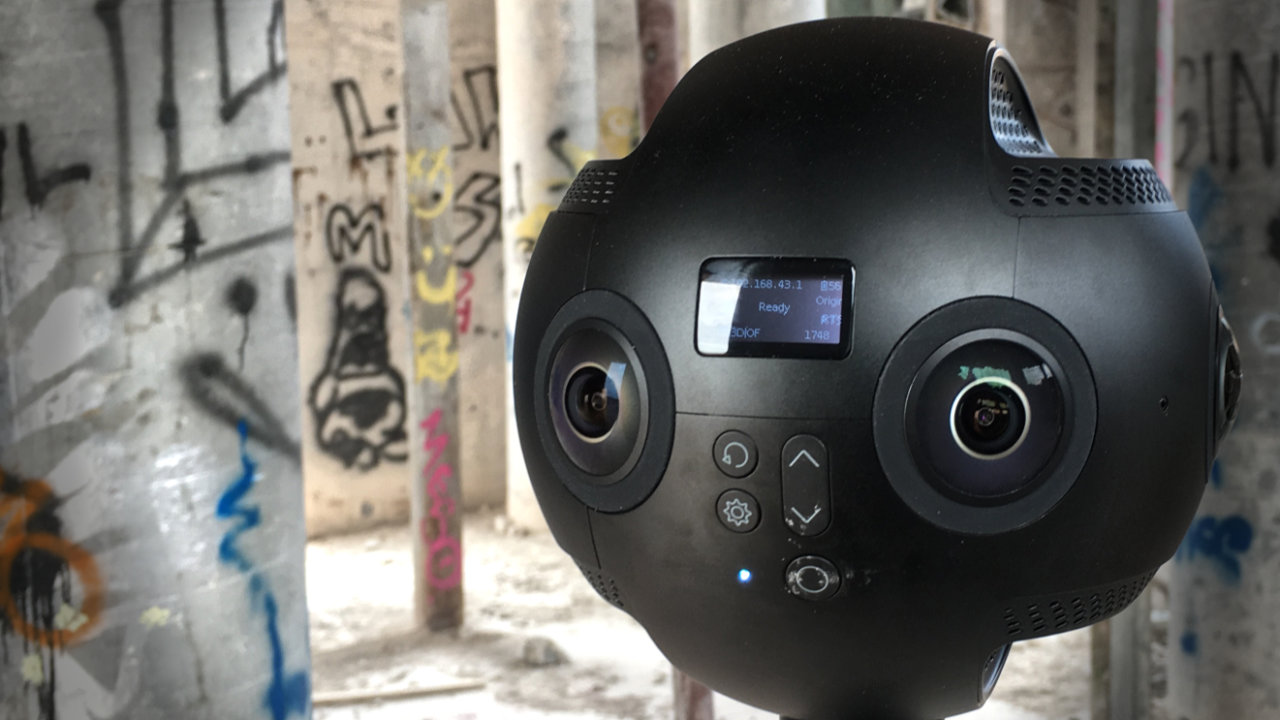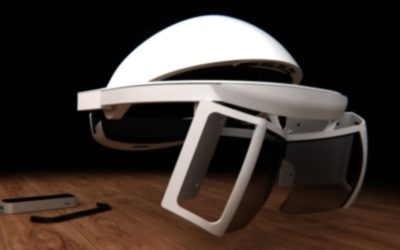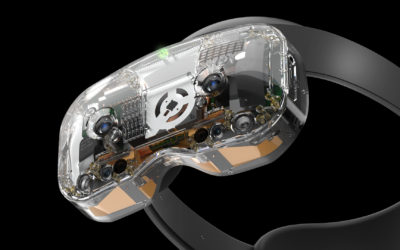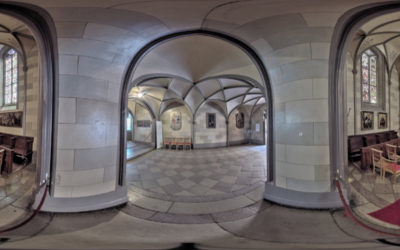360VR is not tiny planet photos or 360 omni cam edited into standard 2D video! I love that 360 cameras have become more popular, but the images produced don’t give that full immersive effect that really caught my imagination the first time I viewed a proper 360VR image in a VR headmount display. I hope that folks won’t equate 360VR with 2D action cam footage.
To get the full immersive effect of 360VR you need to shoot with a 360 field of view, stereographic (“3D”) capable camera. This requires more than just 2 lenses, typically 6-10 separate lens and sensors.
Characteristics of VR
To create optimum media for any platform it helps to understand the basic capabilities of that platform. VR is a fundamentally new form of media consumption. Headsets allow full movement of the viewpoint, that includes side to side, forward/back, as well as pitch/yaw/roll. All of this is done in full stereographic “3D”, which means the left and right eye are seeing slightly different angles of a scene. Our captures should leverage all aspects of this. It can actually be fairly disconcerting to view a flat 2D image in VR, things “look” like they should be three dimensional, but they obviously are not. For some images even stereo 3D is not enough to give a complete feeling of immersion. When objects are close to the camera there should be parallax, close objects moving more than far objects, To get this motion requires a depth map based image.
Resolution
Here’s an overview of HMD capabilities in 2021. Captured media should provide enough resolution to support today’s headset, but also consider that resolution will likely increase in the future. “Future proofing” your VR images by capturing a higher resolution and downsizing is recommended. Note that often full resolution video will not be possible due to CPU limitations on mobile headsets.
| HMD | Resolution per eye | Refresh | FOV |
| Facebook Quest 2 | 1832×1920 | 72 | |
| Oculus Rift | 1080×1200 | 90 | 110 |
| HP Reverb Pro | 2160×2160 | 90 | 114 |
Degrees of Freedom
When VR is fully realized it offers 6 degrees of freedom. That means full head rotation and also translation. The term “room scale VR” refers to ability to physically walk around the 3D space, so think of it as extreme translation.

360VR is often just 3 degrees of freedom. Once you get accustomed to 6Dof, 3Dof can be mildly disruptive and break the feeling of immersion. A “fake” 6Dof can be implemented using a depth map, and viewer capable of displaying that depth map. For greater 6DoF translation a lightfield capture approach will be required.
Viewing Resolution
Resolution is fairly limited right now compared to still image displays. This can be discouraging, a full resolution VR image that meets or exceeds the resolution of the latest HMD is often seen as inferior low resolution image when viewed on a big 4K, high DPI monitor. I always remind my viewers and creators, if they aren’t viewing a 360VR image in a VR HMD, they aren’t viewing the image in the “correct” format. Shooting with a camera that is higher resolution can give a bit of future proof, but generally images and especially video are going to need to be down ressed to an appropriate resolution. Right now in 2021 that is 6k, or possibly 8k.
360VR Cameras
So given the above requirements we can immediately remove from consideration any 360 camera that just has 2 lenses. Consumer back to back cameras are really just omni-directional cameras, they have no ability to create stereo effect. Some vendors offer a side by side camera, like the ZCam, but this won’t give you a 360 degree view. It does give a 180VR image which is a compromise, but at least gives immersive stereo in half the viewing area.
Commercially Available
The following cameras are all true 360VR cameras with multiple sensors allowing for 360 degree, stereoscopic images.
Insta360 Pro 2 – A great general purpose 360VR camera. This camera is light enough to be used when hiking, and is our go to landscape 360VR camera. The Insta360 stitching workflow is very easy to use, and generates good stereo images.
Insta360 Titan – Currently one of the best 360VR cameras out there. Unfortunately fairly heavy so usable in standard production environments. The 8 lenses give good stereo depth generation.
Kandao Obsidian Go – Good alternative to the Insta360 Pro. The workflow is not quite as straightforward as the Insta360
ZCam S1 – Excellent sensor quality, so a good competitor to the Insta360 Pro. The four lenses reduce the number of stereo stitch points, with the possible drawback of less overlap to generate detailed depth information.
Custom Camera Rigs
I have built a number of customer camera rigs, and this is a great option for serious production companies. Maximum image quality is only available going this route, none of the commercial offerings give the dynamic range and resolution that one can get making their own rig. The original rigs like the Google Jump with a large number of cameras turn out to be fairly problematic both from a camera control perspective, but also post production workflow. Many cameras equals many stitch points, so while the stereo image can be excellent most custom rigs will want to use a wide angle camera.
Best Camera for custom rig: Panasonic micro 4/3rds like the GH5
Best Lens for custom rigs: iZugar MKX22
Failed Big Business Attempts
Both Google and Facebook decided to get people excited about their 360VR cameras, only to cancel the projects very quickly thereafter. This really kills the motivation for small manufacturers to enter the space with their own offerings. My recommendation is to avoid anything Facebook or Google are doing in this space and encourage companies working towards an open and private future for VR and AR. The two projects below could be used for inspiration on DIY camera rigs so are included here:





0 Comments